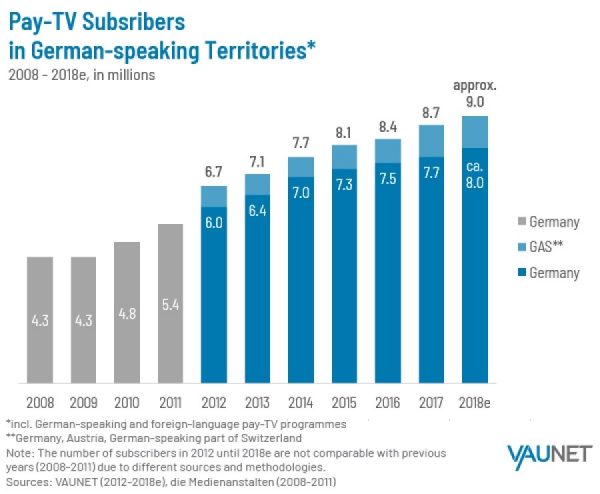Recently, we talked about the OTT tipping point and its rapid rise in comparison to the ever-slowing growth of traditional pay-TV. And now we’d like to explore the dynamics of pay-TV even further.
The signals are pretty clear for Pay TV providers
At present, the traditional pay-TV model is in peril with a drop in subscribers across every category.
In fact, recent studies discovered that the most prominent pay-TV providers in the US market, representing around 95% of the overall market share, lost in the region of 305,000 net video subscribers in Q1 2018, compared to a pro forma drop of 515,000 subscribers in Q1 2017.
Moreover, in addition to this striking discovery, pay-TV providers in the world of cable, telecoms, and internet delivered services such as Sling TV all reported losses during the same period.
With less than half of television services in the Multiscreen Index reporting subscriber gains or growth in Q1 of 2018, it's clear that the model is becoming antiquated, with a danger of becoming extinct, unless a certain level of evolution occurs.
What's particularly interesting is, despite this trend taking hold internationally, it seems that in Germany, and some German-speaking regions, pay-TV subscribers are actually on the rise, as this chart shows:
The number of pay-TV subscribers in Germany climbed from 7.5 million in 2016 to 7.7 million in 2017, and in Germany, Austria and Switzerland.
Where should the focus be?
To survive on tomorrow’s commercial battlefield and stand a chance of stacking up to the various OTT offerings out there, these are the key steps for pay-TV needs to disrupt itself:
- Investing in scalable and interoperable technologies;
- Learning from valuable digital data and the viewing experience;
- Testing a diverse and robust range of OTT offerings and bundles;
The digital transformation and reorganization may not give immediate results, like jump in subscribers or profits. Thus, long-term and sustainable success should in the focus of the visionary decision makers.
Altice Europe has essentially adopted a strategy of rebuilding its subscriber base as a vehicle for future revenue growth by launching a series of promotional offers, at the cost of sacrificing revenues and margin.
Also, let's not forget that there are other ways to make profits beside sub drops.
Recently, media giant Comcast reported a 2.1% revenue increase while losing 14,000 pay-TV subscribers - and it attributes this spike in revenue to an increase in high-speed internet customers.
To thrive in the entertainment biz, it’s imperative that pay-TV providers embrace emerging technologies and reconsider their original models - a failure to do so could result in losses.
Read more about the importance of happy viewers in the OTT era:





